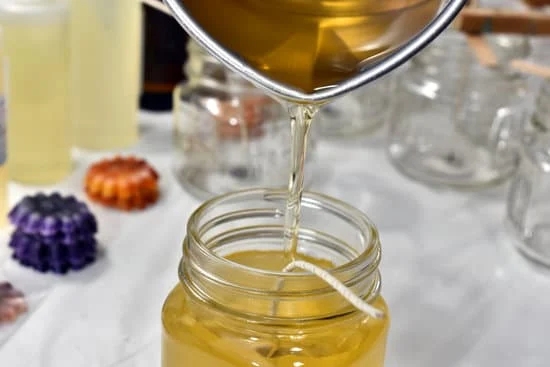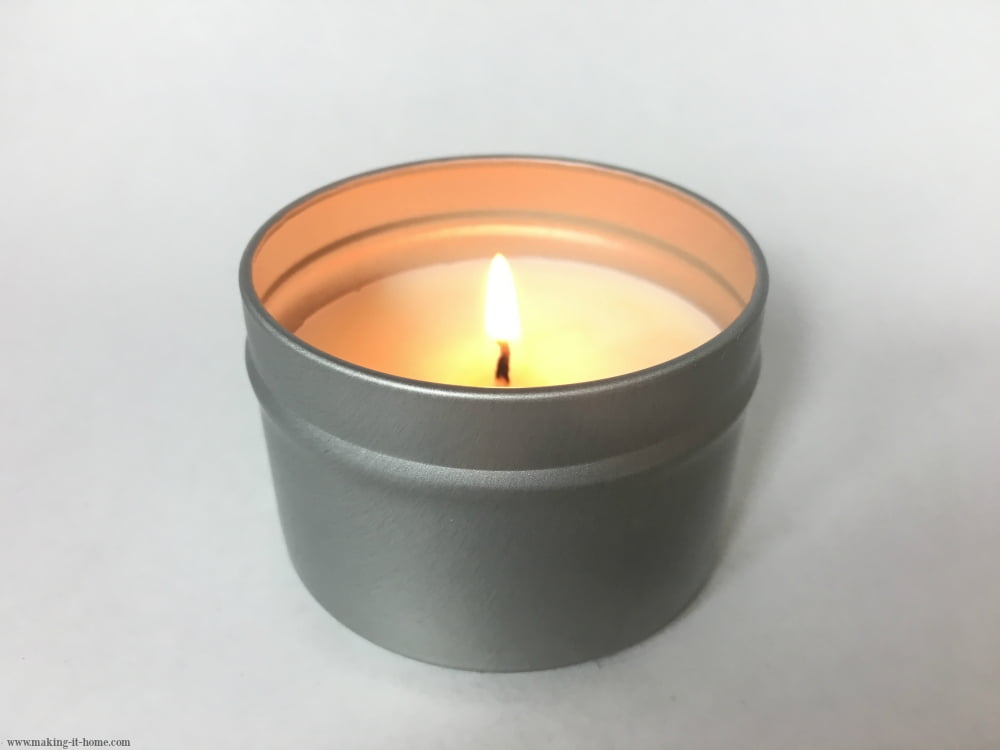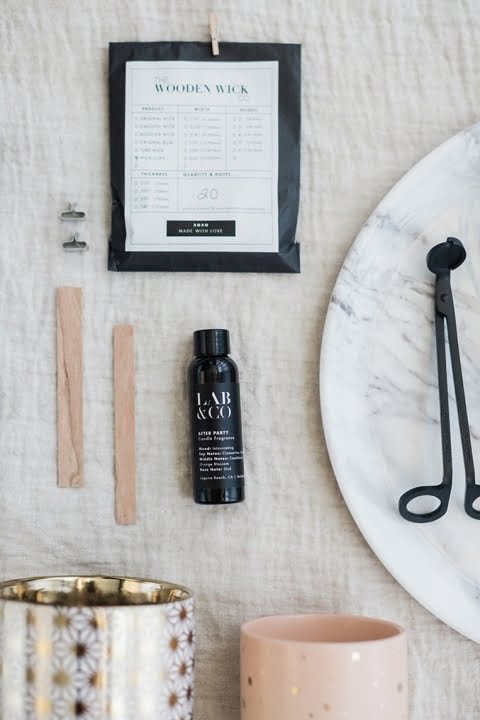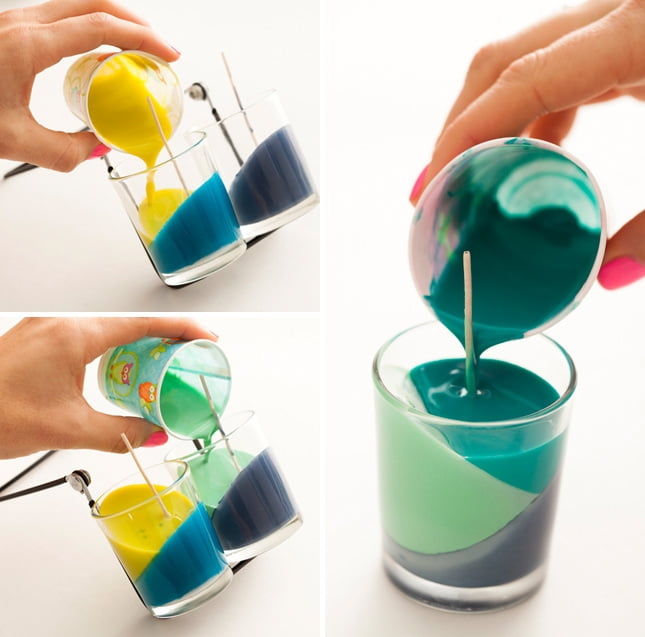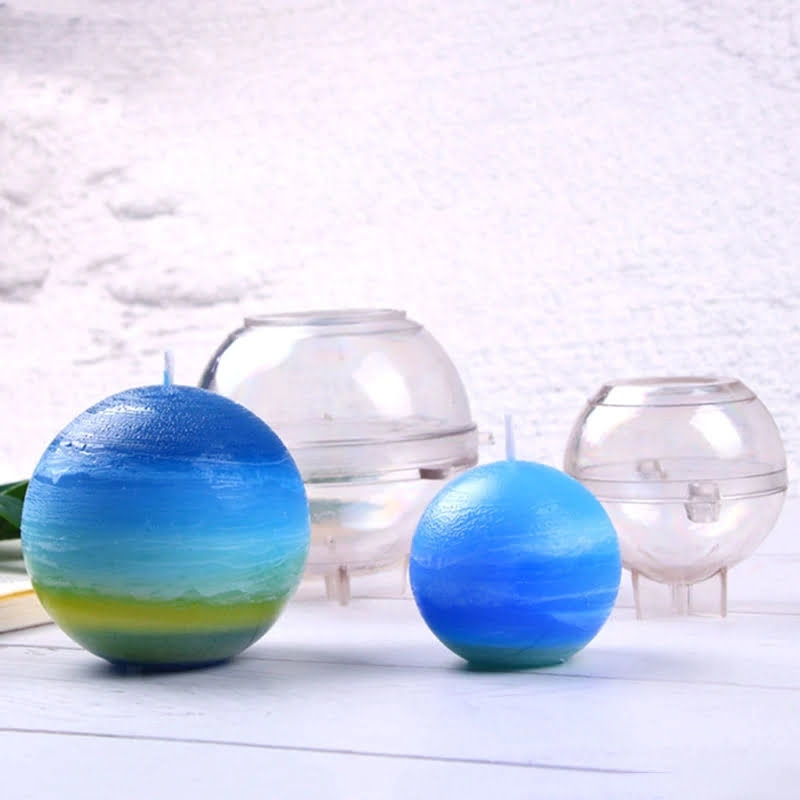Wooden candle wick making has become increasingly popular among candle enthusiasts seeking a unique and eco-friendly option for their creations. This artisanal approach to candle making involves crafting wicks from natural wooden materials rather than traditional cotton or synthetic fibers. By using wooden wicks, not only can you create a visually appealing and aesthetically pleasing product, but you also contribute to a more sustainable and environmentally friendly practice.
The use of wooden candle wicks offers several benefits that set them apart from conventional wicks. Wooden wicks have a distinct crackling sound when lit, creating a cozy ambiance reminiscent of a crackling fireplace. They also tend to burn slower and cleaner than cotton wicks, resulting in longer-lasting candles with minimal soot or smoke. Additionally, wooden wicks are known for producing a broader and more consistent flame, which enhances the overall aesthetic appeal of your candles.
When it comes to choosing the right type of wood for your candle wicks, certain varieties are better suited for this purpose than others. Woods like cherry, cedar, birch, or maple are popular choices due to their natural properties that promote an efficient and clean burn.
Each type of wood brings its unique characteristics to the candles, adding depth and warmth to the overall sensory experience. In the following sections, we will delve deeper into the step-by-step process of crafting wooden candle wicks and provide tips for taking your creations to the next level.
Benefits of Using Wooden Candle Wicks
Wooden candle wicks have gained popularity in the world of candle making due to their numerous benefits. One of the key advantages of using wooden wicks is the aesthetically pleasing crackling sound they produce as they burn, creating a cozy ambiance similar to that of a fireplace.
This feature adds an extra dimension to the sensory experience of burning a candle, making it more enjoyable for many people. Additionally, wooden wicks tend to burn slower and more evenly than traditional cotton wicks, allowing your candles to last longer.
Environmental Benefits
Another significant benefit of using wooden wicks is their eco-friendliness. Wooden wicks are often made from sustainably sourced wood, such as cherry, maple, or cedar, making them a renewable resource.
Unlike cotton wicks that may contain chemicals or metals for stability, wooden wicks are typically free from harmful substances, making them a safer option for both your health and the environment. By choosing wooden candle wicks, you can reduce your carbon footprint and support sustainability in the candle-making industry.
Aesthetic Appeal and Versatility
In addition to their functionality and eco-friendliness, wooden candle wicks also add an element of elegance to your candles. The natural look of wood complements various types of wax and container styles, enhancing the overall aesthetic appeal of your candles.
Wooden wicks come in different sizes and shapes, allowing you to customize the look and performance of your candles based on your preferences. Whether you prefer a classic straight grain wood wick or a spiral-shaped one, there is a wide range of options available for you to experiment with and create unique candle designs that stand out.
Types of Wood Suitable for Candle Wicks
Wooden candle wicks are a unique and eco-friendly alternative to traditional cotton wicks, offering a charming crackling sound while burning. When it comes to choosing the right type of wood for your candle wicks, it is essential to consider factors such as burn time, scent throw, and sustainability. Some types of wood are more suitable for candle wicks due to their distinct characteristics.
One popular choice for wooden candle wicks is cherry wood, known for its slow and even burn. Cherry wood also releases a pleasant aroma when burned, adding an extra element of fragrance to your candles. Another option is cedarwood, which not only burns well but also has natural insect-repellent properties, making it ideal for outdoor use. Additionally, bamboo wicks are gaining popularity for their clean burn and minimal soot production.
| Wood Type | Key Features |
|---|---|
| Cherry Wood | Slow and even burn; pleasant aroma |
| Cedarwood | Natural insect-repellent properties; suitable for outdoor use |
| Bamboo | Clean burn; minimal soot production |
Each type of wood brings its own unique benefits to wooden candle wick making, allowing you to customize the burning experience of your candles based on your preferences. Experimenting with different types of wood can also provide insights into the various scents and characteristics they contribute to the overall ambiance created by your handmade candles.
Whether you choose cherry, cedarwood, bamboo, or any other type of wood for your candle wicks, incorporating wooden wicks into your candle-making process can add a touch of nature’s beauty to your creations.
Step-by-Step Guide to Making Wooden Candle Wicks
Wooden candle wicks offer a unique and natural touch to any candle-making project. Crafting your own wooden candle wicks allows you to customize the size, shape, and burn of your candles. To start making your own wooden candle wicks, you will need to gather a few materials such as wooden dowels, beeswax, scissors, and a double boiler for melting wax.
Begin by cutting the wooden dowels to your desired length based on the size of the candles you plan to make. It is essential to choose a type of wood that burns well without emitting harmful chemicals or excessive smoke. Popular choices for wooden candle wicks include cedar, cherry, and maple due to their clean-burning properties.
Next, prepare the beeswax in the double boiler until it is fully melted. Carefully dip each cut wooden dowel into the melted beeswax, ensuring that the entire surface gets coated evenly. This step helps prime the wooden wick for optimal burning once it is placed in a candle.
| Wood Type | Burn Quality |
|---|---|
| Cedar | Clean burning |
| Cherry | Low smoke emission |
| Maple | Soot-free burn |
After coating each wooden dowel with beeswax, allow them to dry completely before moving on to create your candles. The finished wooden candle wicks can be inserted into freshly poured candles while the wax is still soft. With practice and patience, you can master the art of making wooden candle wicks and elevate your candle-making skills with this natural and eco-friendly option.
Tools & Materials Needed for Wooden Candle Wick Making
When it comes to making wooden candle wicks, having the right tools and materials is essential for a successful and safe crafting experience. The key tools you will need include a saw, sandpaper, ruler or measuring tape, scissors, and a drill. These tools will help you accurately cut and shape the wooden wicks to fit your candles perfectly. Additionally, having a workbench or sturdy table to work on will make the process more manageable.
In terms of materials, the primary component you’ll need is wood suitable for candle wicks. Popular choices include cherry, maple, cedar, and birch due to their low smoke output and ability to burn steadily. You’ll also need wax for coating the wicks, providing protection from burning too quickly. Finally, don’t forget about safety equipment such as gloves, goggles, and a fire extinguisher in case of emergencies while working with wood and hot wax.
It’s important to invest in quality tools and materials when making wooden candle wicks to ensure that your finished products are not only beautiful but also safe for use. By having everything you need ready before starting your project, you can focus on creating stunning candles with unique wooden wicks that add a special touch to any space.
Safety Precautions for Working With Wood and Wax
Importance of Safety Precautions
When working with wood and wax to make wooden candle wicks, it is essential to prioritize safety to prevent any accidents or injuries. Woodworking tools can be sharp and dangerous if not handled properly, while hot wax poses a burn risk. By following the right safety precautions, you can enjoy creating your wooden candle wicks safely.
Protective Gear and Equipment
Before starting the wooden candle wick making process, make sure to wear appropriate protective gear such as safety goggles, gloves, and an apron. Safety goggles will protect your eyes from wood chips or dust that may fly off while cutting the wood for the wicks. Gloves will shield your hands from splinters or cuts, especially when handling rough wood pieces. An apron can help protect your clothing from any spills or splashes of hot wax during the candle-making process.
Ventilation and Workspace Setup
Ensure that you work in a well-ventilated area when making wooden candle wicks. Wood dust and fumes from melting wax can be harmful if inhaled over time. Open windows or use a fan to keep the air circulating around you. Additionally, set up your workspace with enough room to move around freely without any obstacles that could cause accidents. Keep flammable materials away from heat sources like candles or hot wax to reduce fire hazards during the crafting process.
Tips for Enhancing Your Wooden Candle Wicks
When it comes to wooden candle wick making, there are various ways you can enhance the look and performance of your candles. One popular method is to infuse the wooden wicks with fragrance oils before using them in your candles.
This adds an extra layer of scent to your candles, giving them a more captivating aroma when lit. To do this, simply place the wooden wicks in a container with your chosen fragrance oil and allow them to soak for a few hours or even overnight.
Another way to enhance your wooden candle wicks is by adding colorants to them. This can be done by dipping the wicks in colored wax before incorporating them into your candles. Not only does this add a pop of color to your candles, but it also helps create unique and eye-catching designs. Additionally, using colored wicks can complement the overall aesthetic of your candles and tie into any specific themes or occasions you may be creating them for.
Furthermore, incorporating decorative elements into your wooden candle wicks can elevate their appearance and make them stand out. You can consider attaching beads, charms, or other embellishments to the top of the wick holder for a personalized touch.
These small details can make your candles more visually appealing and add a special flair to each piece. Experimenting with different ways to enhance your wooden candle wicks allows you to explore your creativity and produce one-of-a-kind candles that are not only beautiful but also fragrant and functional.
How to Properly Care for Wooden Candle Wicks
Caring for your wooden candle wicks is essential to ensure that they burn properly and last a long time. Proper maintenance can also enhance the overall aesthetics of your candles. Here are some tips on how to properly care for your wooden candle wicks:
1. Trim the Wick: Just like traditional cotton wicks, it is important to trim wooden wicks before each use. To prevent excessive smoking and uneven burning, make sure to trim the wick to about 1/8 of an inch in length.
2. Clean the Wick: Over time, soot and debris can accumulate on the top of the wooden wick, affecting its burning performance. To clean the wick, gently remove any buildup with a soft cloth or paper towel when the wax is solidified.
3. Avoid Excessive Burning: To prolong the life of your wooden candle wick, avoid burning the candle for more than 4 hours at a time. Excessive burning can cause the wood to char and shorten its lifespan.
Additionally, consider rotating and repositioning your wooden candle wick between uses to ensure even burning and prevent tunneling.
Properly caring for your wooden candle wicks not only enhances their longevity but also ensures a safe and enjoyable burning experience. By incorporating these simple maintenance practices into your candle care routine, you can continue to enjoy the beauty and ambiance of wooden-wicked candles for many hours of burn time. Invest time in maintaining your wooden candle wicks, and you will be rewarded with beautifully lit spaces and captivating scents filling your home.
Troubleshooting Common Issues With Wooden Candle Wicks
Wooden candle wicks offer a unique and natural alternative to traditional cotton wicks when it comes to creating handcrafted candles. However, like any crafting process, there may be common issues that arise when working with wooden candle wicks. By understanding how to troubleshoot these issues, you can ensure that your candles burn evenly and beautifully every time.
Here are some common problems you may encounter when using wooden candle wicks and how to address them:
1. Uneven Burn: If you notice that your candle is burning unevenly, causing one side to melt faster than the other, this could be due to the way the wooden wick was placed in the wax. To fix this issue, carefully trim the wick to ensure it is centered in the candle container. Additionally, make sure to follow proper pouring temperatures for your wax to prevent uneven burning.
2. Weak Flame: Sometimes wooden candle wicks may produce a weak flame that struggles to stay lit. This could be caused by excess carbon buildup on the tip of the wick or insufficient oxygen flow around the flame. To remedy this, use a wick trimmer to remove any carbon deposits from the top of the wick before relighting. You can also try gently blowing on the flame to increase airflow around it.
3. Excessive Smoking: If your wooden candle wick is producing excessive smoke while burning, it is likely due to an oversized wick compared to the diameter of your candle container. To fix this issue, extinguish the flame and allow the wax to cool slightly before carefully trimming the wick with scissors. Aim for a shorter length that matches the size of your container for optimal burning without smoking.
By addressing these common issues with wooden candle wicks promptly and following proper troubleshooting techniques, you can enjoy creating beautiful and eco-friendly candles with ease. Experimenting with different types of wood and adjusting techniques as needed will help you master the art of wooden candlewick making and enhance your handmade creations even further.
Conclusion
In conclusion, wooden candle wick making is a beautiful art form that combines craftsmanship and creativity to enhance the overall candle-making experience. The use of wooden wicks offers numerous benefits such as a cleaner burn, longer-lasting flames, and a soothing crackling sound that adds an extra touch of ambiance to any room.
By choosing the right type of wood for your wicks and following the step-by-step guide provided, you can create unique and personalized candles that stand out from the rest.
It is essential to pay attention to safety precautions when working with wood and hot wax to prevent any accidents or injuries. By using the recommended tools and materials for wooden candle wick making, you can ensure a smooth and enjoyable crafting process. Additionally, properly caring for your wooden wicks by trimming them regularly and keeping them clean will help extend their lifespan and maintain optimal burning performance.
If you encounter any issues with your wooden candle wicks, remember to refer to the troubleshooting tips provided in this article. Whether it’s ensuring proper wax saturation or adjusting the wick placement, these simple solutions can help address common problems and improve your overall candle-making experience. Embrace the art of wooden candle wick making as a creative outlet that allows you to express yourself through beautifully crafted candles that bring warmth and light into any space.
Frequently Asked Questions
Can You Make Wooden Candle Wicks?
Yes, I am able to make wooden candle wicks. Creating wooden wicks involves selecting the right type of wood, cutting it to size, and treating it with oils to ensure a slow and steady burn.
Are Wood Wicks Better for Candles?
Many people believe that wood wicks are better for candles compared to traditional cotton wicks. Wood wicks burn cleaner, produce less soot, create a soothing crackling sound, and can provide a longer burn time for candles.
What Kind of Oil Do You Soak Wood Wicks In?
When soaking wood wicks in oil, it is important to choose oils that are non-toxic and suitable for candle making. Popular choices include coconut oil, olive oil, or mineral oil. These oils help the wood wick ignite evenly and sustainably during the burning process.

Welcome to my candle making blog! In this blog, I will be sharing my tips and tricks for making candles. I will also be sharing some of my favorite recipes.

